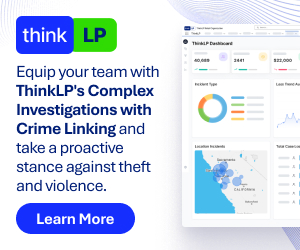industry focus
Profiling takes shape
Offender profiling is taking a different shape, as investigators grapple with increasingly ‘social’ criminal activity, says Yuval Ben-Moshe, senior forensics technical director at Cellebrite.
Mobile forensics has changed the methodology when it comes to offender profiling. The frequent use of mobile devices has provided investigators with another source for profiling criminal suspects, as well as an insight into their habits and personalities.
This is not just because of the volume of user voice calls and SMS texts; the amount of rich data that can be extracted from Instant Messaging (IM) and social media applications gives forensic investigators the paint and brushes to develop a detailed picture of a suspect and a criminal case. A suspect’s social media personality can offer a more tailored overview of the character, his or her likes and dislikes and a reflection of ‘who’ they really are, beyond their alleged actions. A victim’s presence on social media can also be used to find a common link to possible suspects.
Recent research from Cellebrite found that 77 per cent of respondents believed that mobile apps were a critical data source in criminal investigations. While this clearly indicates that mobile apps offer a vital source of evidence, it’s not a suggestion that investigators should solely look at mobile-based apps when building the investigative picture – evidence should be extracted from all other items of phone-based data as well.
The widespread use of mobile apps makes them a critical data source for law enforcement, both in terms of evidence and investigative leads. The value to both prosecuting and defence counsels, in a court of law, makes the neglect of such data a potentially severe barrier to solving a case.
People now more frequently use mobile devices to access social media apps, rather than using a traditional PC or laptop. Moreover, social media data that is extracted from a suspect’s mobile device provides additional characteristics such as more accurate location-based data and time proximity to another event or situation. For example, by connecting to a specific Wi-Fi network investigators can establish presence in a certain place and at a certain time correlating it with another action, possibly, on a social network.
Criminals will use various communication channels in the course of their mobile activity. For example, a suspect could use an IM app to organise a meeting, but use SMS to contact the victim. Investigators must operate a flexible forensic practice when sourcing evidential data from mobile devices, because the various channels that criminals communicate through means that a one dimensional approach to forensic evidence gathering could lead to the omission of valuable data.
While data points such as SMS text messages and GPS locations may result in an immediate lead in a criminal case, the ‘online social identity’ of a suspect will allow investigators to delve into the personality of the suspect, which in turn could help build out the case.
This social data can be extracted through the social media apps that the suspect has downloaded on their device. Facebook posts, Tweets, ‘shares’ and ‘likes’ can all give critical information to investigators hoping to build the profile of a suspect.
A suspect’s social media identity goes beyond their ‘likes’ and ‘shares’ though; it can also include immediate locational data, such as a recent ‘check-in’ at a restaurant or a shop. Even if this locational data isn’t completely current, it will still help to paint the forensic picture of a suspect in terms of where they regularly go, who they meet with, and what they do when they’re there.
In court, social data retrieved from mobile apps is fast-becoming a major source of evidence in not only building up the profile of the suspect, but also in establishing or demolishing a witness’ credibility. While social or app-based data has become a crucial evidential component to an investigator’s case, it can also act as an important part of the prosecution or defence process in court.
Offender profiling is changing as people use more social applications to communicate with one another. This is providing investigators with another source of information to build up a complete profile of a suspected criminal, which in turn offers a more comprehensive picture of a suspect in a court of law.
The amount of data that is now being consumed and shared is opening up a number of different opportunities for mobile forensic investigators, who are in a constant battle to stay one step ahead of the increasingly connected criminal.






